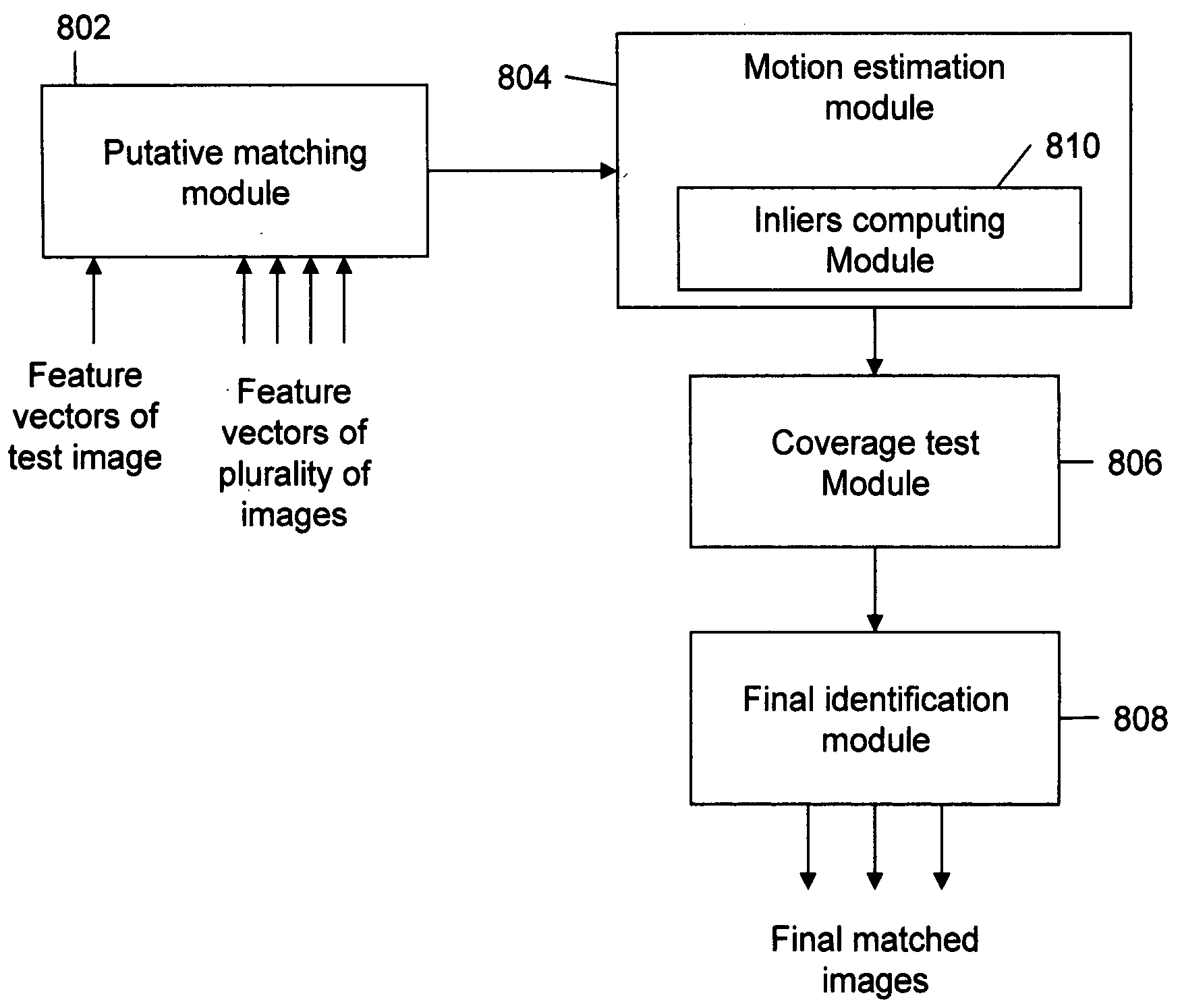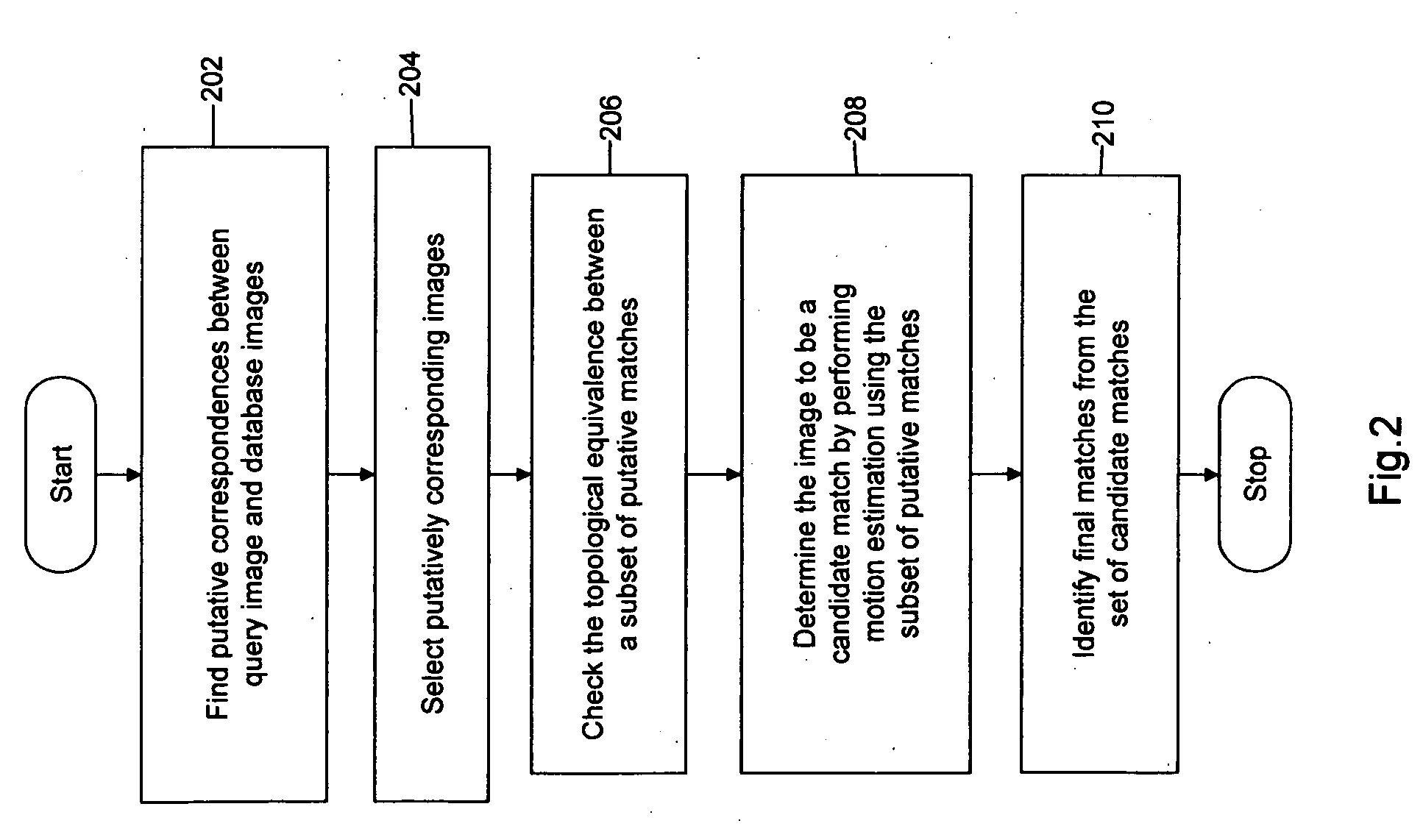System and method to match images
a matching system and image technology, applied in the field of digital image processing, can solve the problems of inability to achieve rigid objects, large possible transformation sets generated by statistical algorithms, and inability to match images correctly
- Summary
- Abstract
- Description
- Claims
- Application Information
AI Technical Summary
Benefits of technology
Problems solved by technology
Method used
Image
Examples
Embodiment Construction
[0025]Various embodiments of the present invention relate to a method, system and computer program product for matching images. The method uses the feature points present in an image to represent the image. The first step in the method is to determine putative correspondences between a query image and a database image. A putative correspondence is a pair of feature vectors in the query image and a database image that are visually similar to each other. After the putative correspondences are determined, a topological equivalence test is performed on a subset of putative correspondences to avoid forming a physically invalid transformation. After the transformation is determined, an orientation consistency test is performed. An offset point is determined for the feature points in the subset of putative correspondences in one of the images. Each offset point is displaced from its corresponding feature point in the direction of the orientation of that feature point. The transformation is...
PUM
 Login to View More
Login to View More Abstract
Description
Claims
Application Information
 Login to View More
Login to View More - R&D
- Intellectual Property
- Life Sciences
- Materials
- Tech Scout
- Unparalleled Data Quality
- Higher Quality Content
- 60% Fewer Hallucinations
Browse by: Latest US Patents, China's latest patents, Technical Efficacy Thesaurus, Application Domain, Technology Topic, Popular Technical Reports.
© 2025 PatSnap. All rights reserved.Legal|Privacy policy|Modern Slavery Act Transparency Statement|Sitemap|About US| Contact US: help@patsnap.com



